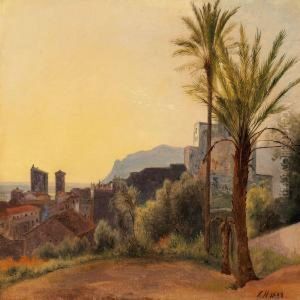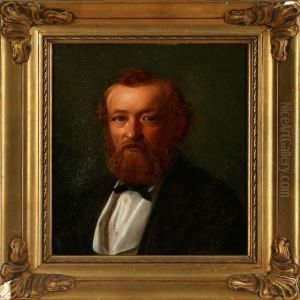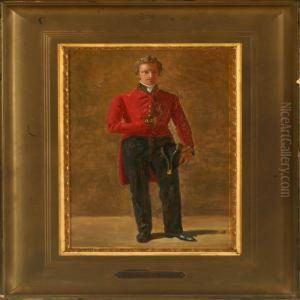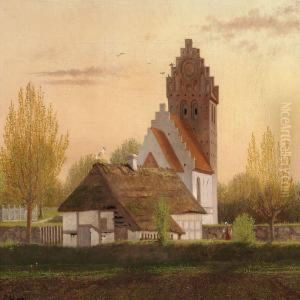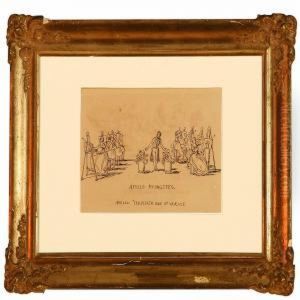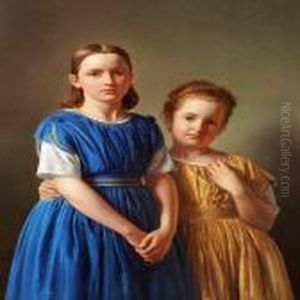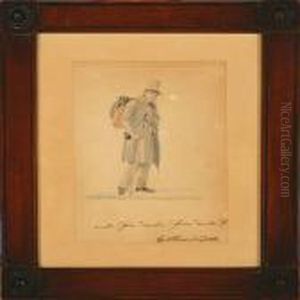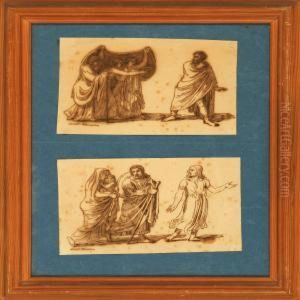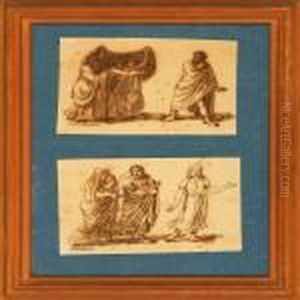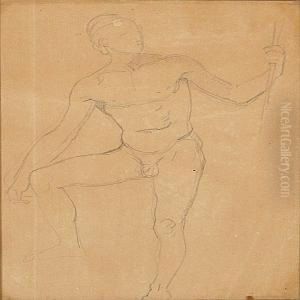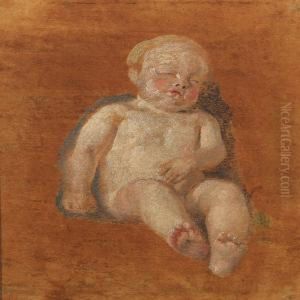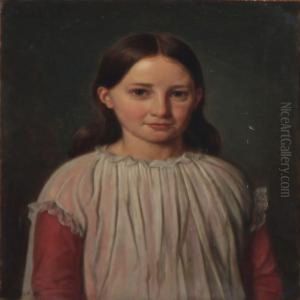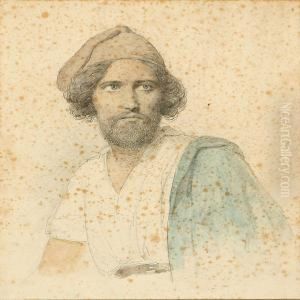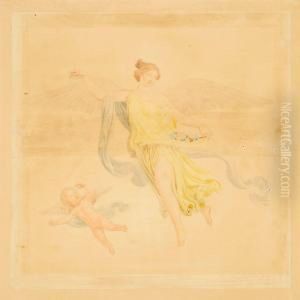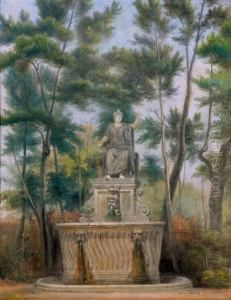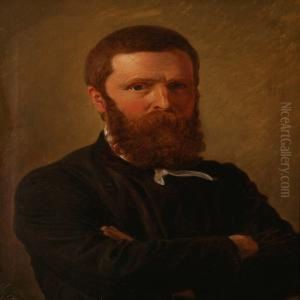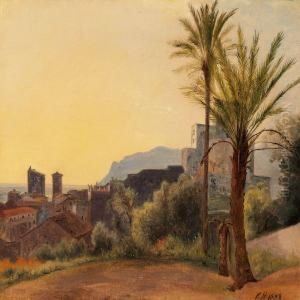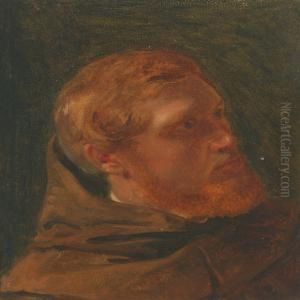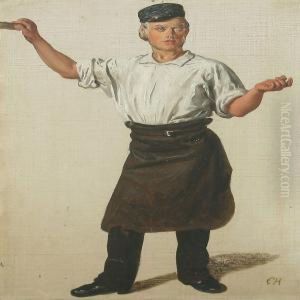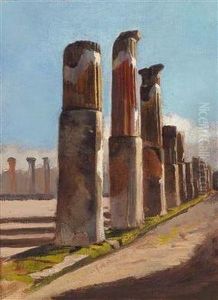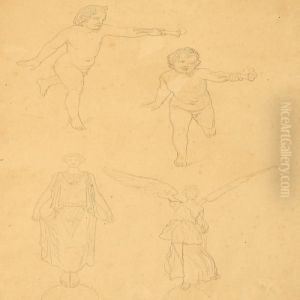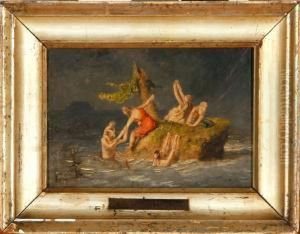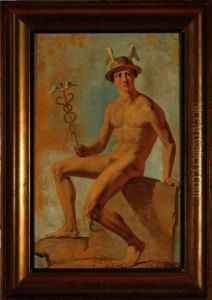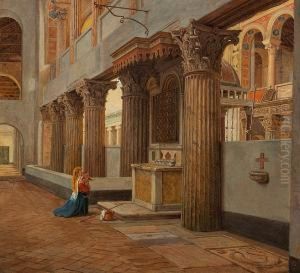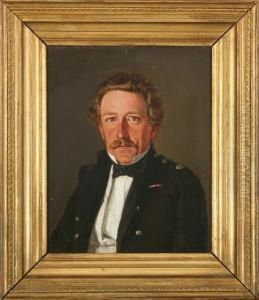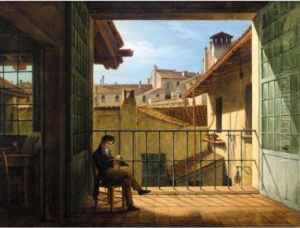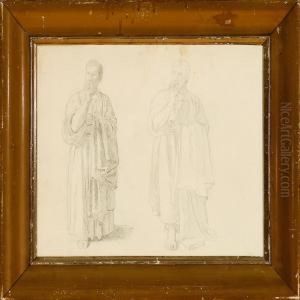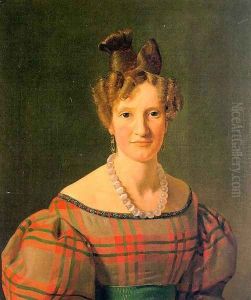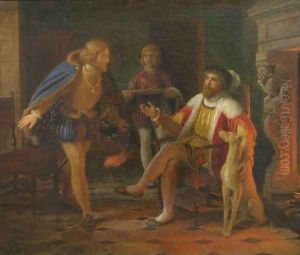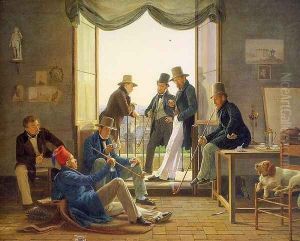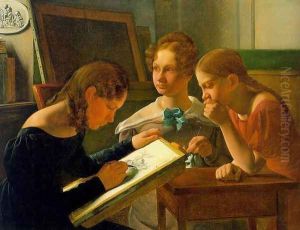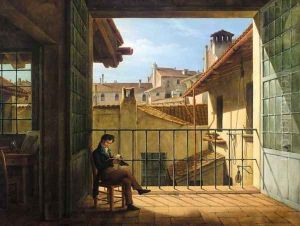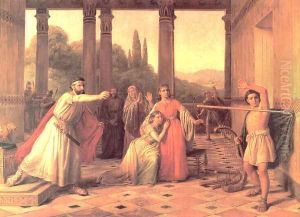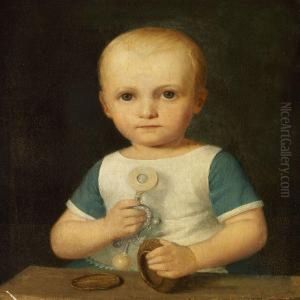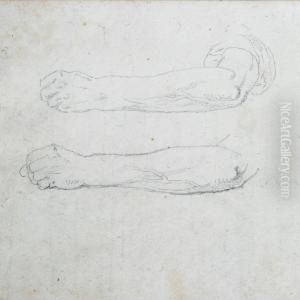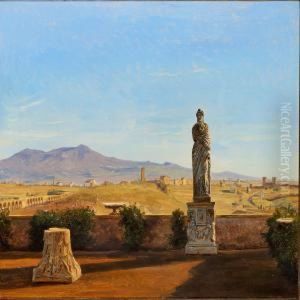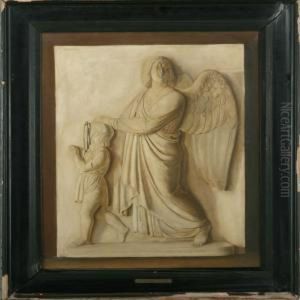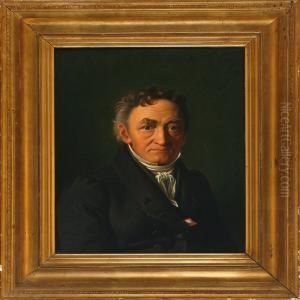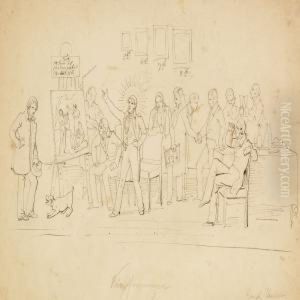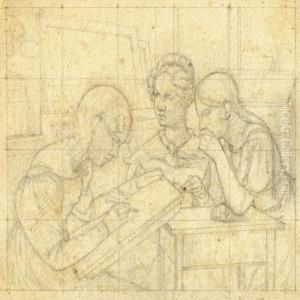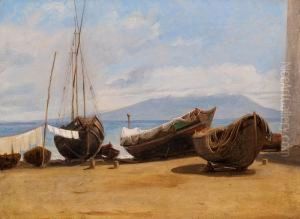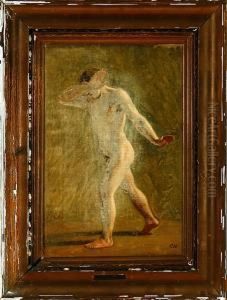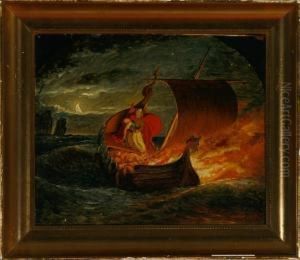Constantin Hansen Paintings
Constantin Hansen was a prominent Danish painter active in the 19th century, known for his contributions to the Golden Age of Danish painting. Born on November 3, 1804, in Rome, where his father, portrait painter Hans Hansen, was residing, Constantin was exposed to the world of art from an early age. His family moved back to Denmark in 1810, and he began his formal art education at the Royal Danish Academy of Fine Arts in Copenhagen at the age of 16.
During his time at the Academy, Hansen developed a keen interest in historical painting, which became a defining feature of his work. He studied under the guidance of renowned artists such as Christoffer Wilhelm Eckersberg, who is often referred to as the father of Danish painting. Hansen won the Academy's small gold medal in 1828 and the large gold medal in 1833, which were both significant honors that marked his burgeoning artistic talent.
Following his studies, Hansen traveled throughout Italy to study the masters of the Renaissance, an experience that would greatly influence his style and subject matter. Upon returning to Denmark, he became a central figure in the Danish art scene and was associated with the Golden Age of Danish Painting, a period characterized by a flourishing of artistic creativity and achievement in the country.
Hansen's work included historical and mythological scenes, portraits, and architectural paintings. He was particularly admired for his precise use of light and shadow, his attention to detail, and his ability to convey historical subjects with a sense of clarity and rigor. Some of his most notable works include 'The Danish Constituent Assembly' (1860-1864), which depicts the assembly that drafted the Danish constitution, and 'The Artist's Sisters, Signe and Henriette' (1826), a double portrait that showcases his skill in capturing the personality of his subjects.
Beyond his painting, Constantin Hansen also worked on decorative projects and was involved in the design and decoration of the University of Copenhagen's ceremonial hall. Throughout his career, he exhibited a strong dedication to his craft and a commitment to fostering the arts in Denmark.
Hansen continued to paint and contribute to Danish cultural life until his later years. He passed away on March 29, 1880, in his home city of Copenhagen, leaving behind a legacy that has cemented him as one of the key figures of Danish art history.



